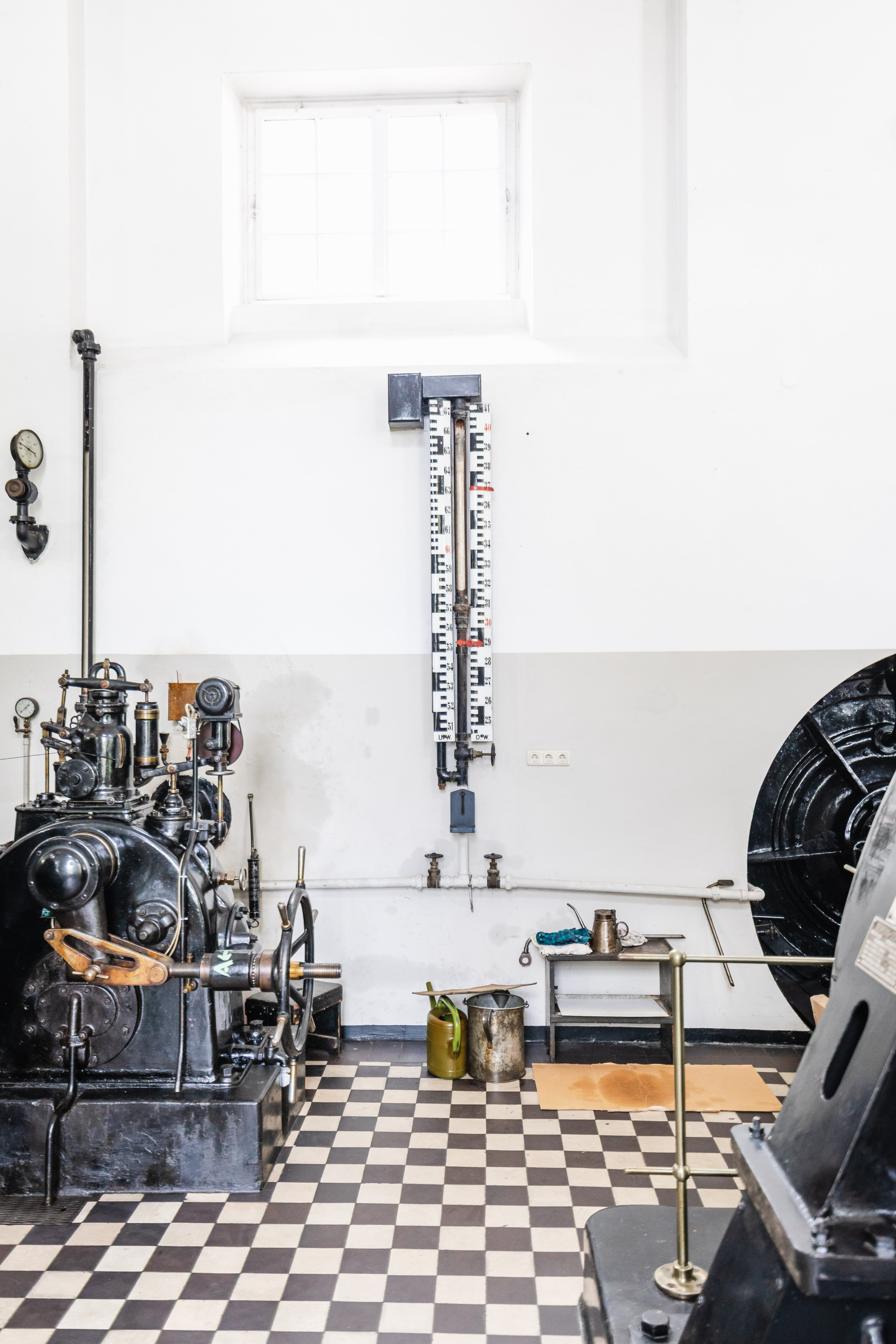
19
Power plant at the Wertachkanal
This power plant was built on what was then the new Wertach canal. It was completed in 1921. The canal’s function was to reduce the risk of flooding and to generate energy. The original purpose of the power plant with its two turbines which are still in use today was to generate electricity for the Augsburg tram system.
Building history and description
- Hydroelectric power plant on the Wertachkanal, still in operation today
- Augsburg, Rosenau- und Thelott district; Schießstättenstraße 19
- Beginning of the channel excavation at Wertach Canal 1920
- Concession of the water rights for 100 years as well as construction of the power plant and start of operation 1921
- Installation of monitoring and control by sensors and computer 1979
- Replacement of a turbine 2007
- Replacement of the second turbine 2022
- Builder City of Augsburg
- Two-storey, massive hipped roof construction over an L-shaped floor plan with surrounding tooth-cut frieze on the eaves
- plastered facade
- rectangular wooden lattice windows
- Beavertail roof covering
- Machine room offset one floor down (thus two-storey)
- in the west across the machine hall cultivated dwelling house
Use and purpose
- Hydroelectric power plant of the city Augsburg should serve the energy supply of the tram
- Wertachkanal built to contain the risk of flooding, then used for energy
- Fall height approx. 4.3m, 28.5 cubic meters of water per second
- Technical Equipment:
- two Kaplan S turbine with horizontal wave
- two Generators from 1921
- bears witness to the importance of the former mill river at Göggingen for industrialization
- Turbine houses converted later into electricity generating hydropower plants
- Power plant as an object of the UNESCO nomination stands for:
- Further development from small-scale to industrial scale
- Further development from a simple waterwheel to a highly effective turbine
- early replacement of mechanical transfers of hydroelectric power in the region by electrification
- Early replacement of local hydropower and electricity generation by decentralized run-of-river power plants
- Use of renewable energies benefits the environment,
- "Augsburg tradition" of sustainability as a global role model
Authenticity and unique features
- Most of the power plant construction and technical equipment have been preserved (for example, visible areas of the two 1921 engine sets inside the power plant)
- 2007 and 2022 renewal of one turbine each (due to large fluctuations in flow rates)
- Recent structural changes in the area of the upper water
- Both generators of the Siemens Schuckert plants, built in 1920, are still used to generate electricity
- Energy generation is fed into the public grid today
- Power plant should provide urban trams
- Providing technical development to a well-preserved, exemplary hydroelectric power plant




